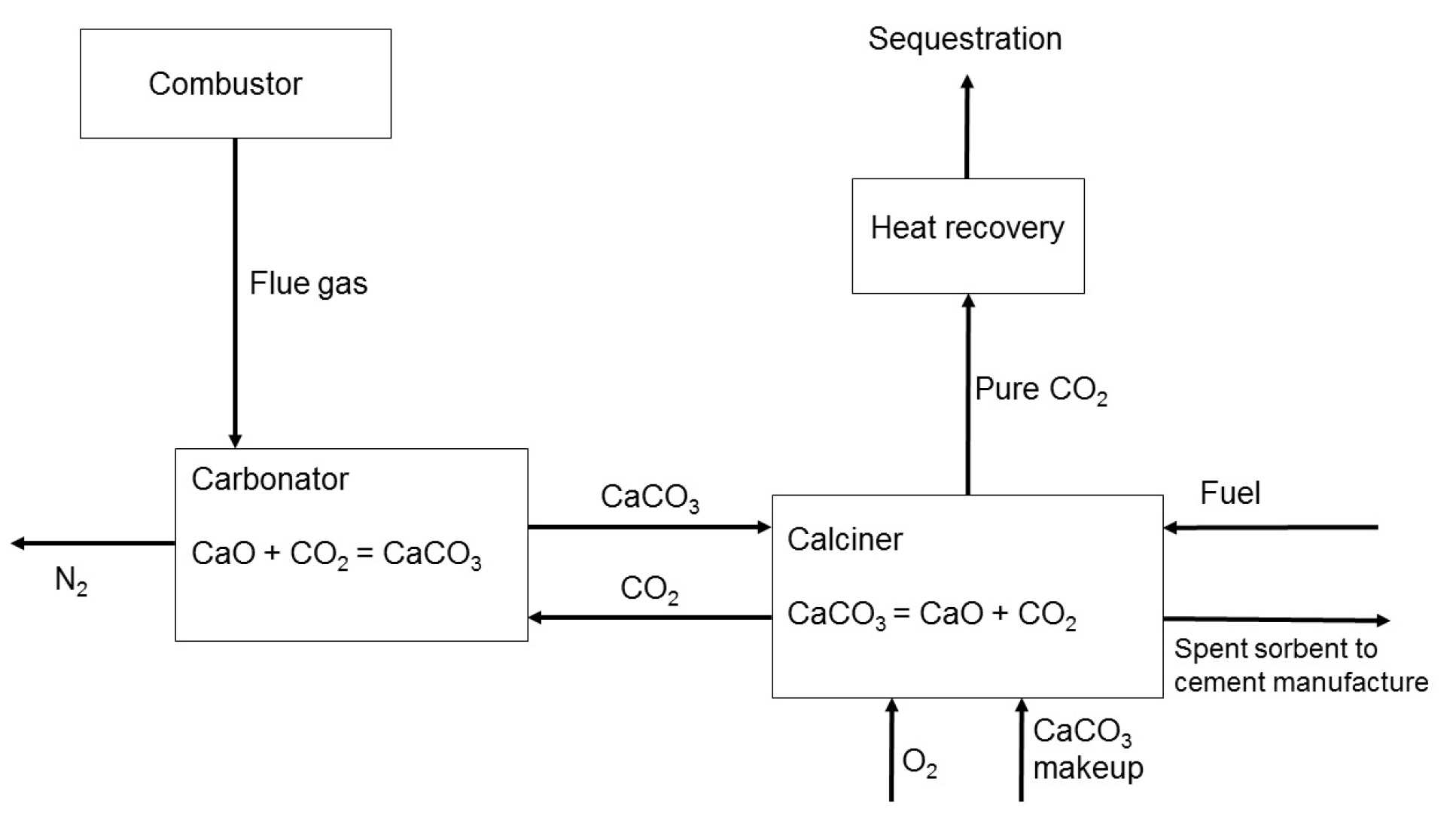The ability of CaO to react with CO2, according to reaction ( I ) (carbonation)
CaO + CO2 = CaCO3 ( I )
and its reverse (calcination) has widespread applications, in two main areas. Firstly, it is possible to enhance the water-gas shift reaction:
H2O + CO = CO2 + H2 ( II )
by adding solid CaO to remove the CO2 from reaction ( II ). This can be used either directly to produce hydrogen from coal, oil, or natural gas, or indirectly to produce electricity if the H2 is of sufficiently high quality for use in a fuel cell. Secondly, it is possible to use reaction ( I ) in order to remove CO2 from flue gas. One version of such a scheme is shown below, which shows the mitigation of CO2 emission from a coal-fired power station.
Unfortunately, the ability of the CaO to take up CO2 reduces with the number of cycles of calcination and carbonation undergone. A number of strategies to reactivate spent sorbent are under investigation, as are preactivation technologies. Integration with cement manufacture is also an important activity at Imperial, since it is possible to take limestone from this process in the calcined form (CaO), with the CO2 already sequestered and to use it to produce cement, for which approximately 50 % of the emissions are generally derived from calcination of limestone. 
For people working in this area, please click here.
